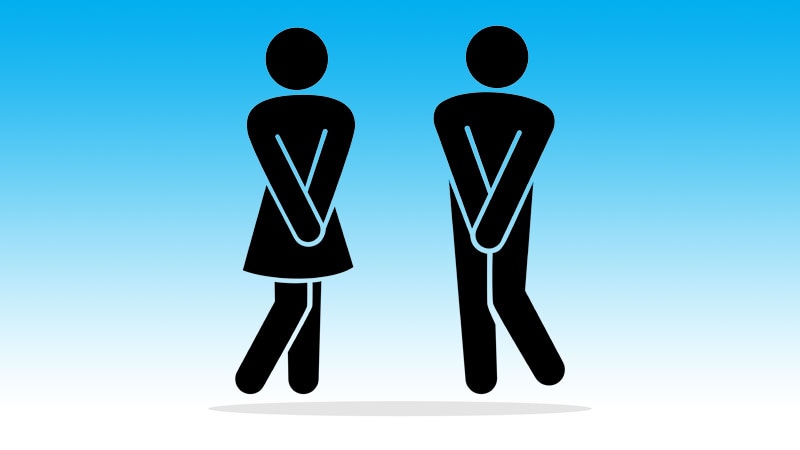The medication vibegron led to improvements in symptoms of overactive bladder and overall quality of life in men undergoing treatment for benign prostatic hyperplasia, according to findings from a phase 3 trial presented on May 6, 2024, at the American Urological Association (AUA) 2024 Annual Meeting in San Antonio, Texas, and data published in The Journal of Urology.
“Vibegron was associated with significant reductions in daily micturition and urgency episodes, as well as our secondary endpoints,” David R. Staskin, MD, an associate professor of urology at Tufts University School of Medicine in Boston, told attendees. “Symptoms really did improve compared to placebo as early as week 2.”
Vibegron is a selective beta-3 adrenergic receptor agonist approved in 2020 by the US Food and Drug Administration for the treatment of overactive bladder.
However, treating overactive bladder symptoms in patients undergoing benign prostatic hyperplasia treatment is more complex because benign prostatic hyperplasia itself can contribute to overactive bladder symptoms, said Kara Watts, MD, an associate professor of urology at Montefiore Einstein in New York City, who was not involved in the new research.
“Management of overactive bladder in this setting may require treatment of benign prostatic hyperplasia as well, but a discussion of the relationship between benign prostatic hyperplasia and overactive bladder symptoms is important,” Watts told Medscape Medical News. “Beyond consideration of treatment for benign prostatic hyperplasia — which can be in the form of medications or surgeries to reduce the size of the prostate — treatment of overactive bladder can include behavioral modification,” such as avoiding bladder irritants, timed voiding, managing constipation, and nighttime liquid restriction,” as well as “medications, percutaneous tibial nerve stimulation, and occasionally more invasive options.”
Vibegron “represents a very attractive and effective pharmaceutical management option for overactive bladder,” both in patients with and without benign prostatic hyperplasia, Watts said. “It has a favorable side-effect profile compared to other oral agents that can be prescribed for overactive bladder, such as anticholinergics, and also has the added benefit of a much lower risk of urinary retention in comparison to most other oral agents.”
Among 1104 men at least 45 years old who were undergoing treatment for benign prostatic hyperplasia and had symptoms of overactive bladder, 538 received 75 mg of vibegron and 542 received a placebo. The men in the vibegron group showed 2.04 fewer mean daily urinations at 12 weeks and 2.2 fewer at 24 weeks compared to 1.3 fewer at both 12 and 24 weeks for men in the placebo group (P <.0001 according to the researchers.>
The drug also reduced urgency of urination. Mean daily episodes of urgency were 2.88 fewer at 12 weeks and 3.07 fewer at 24 weeks in the vibegron group compared to 1.93 and 2.17 fewer, respectively, in the placebo group (P <.0001>
In secondary endpoints, those taking vibegron experienced 0.22 fewer episodes of nocturia (P=.002), 0.8 fewer episodes of urgency incontinence (P=.003), a 0.9-point difference in improvement in the International Prostate Symptom Score (P <.0001 and about ml more volume voided compared to those receiving placebo the researchers reported.>
“The clinical significance of these findings is that vibegron represents an effective pharmacologic option for managing overactive bladder in the context of concomitant benign prostatic hyperplasia, which is a broader context than its original approval for overactive bladder alone,” Watts said.
Data from 969 patients on the overactive bladder quality of life questionnaire found that the symptom bother score was 6.2 points better for men in the vibegron group for those who took a placebo (P <.0001 at weeks. similarly the total health-related quality of life score was points better in vibegron group measures concern coping and sleep also improved significantly men taking remained significant weeks>
Rates of adverse events were similar in the vibegron (45%) and placebo (39%) groups. The most common adverse event was hypertension, which occurred in 9% of the vibegron group and 8.3% of men in the placebo group.
The research was funded by Sumitomo Pharma America, Inc., which makes vibegron. Staskin is a consultant for Astellas, AzuraBio, Sumitomo Pharma America, Inc., and UroCure; is a lecturer for Astellas and Sumitomo; and holds other interests in UroCure, AzuraBio, and Quillitin Pharma. Three coauthors are Sumitomo employees; one is an investigator for Sumitomo, and another has consulted for Hologic, received research funding from Allergan/AbbVie and Uromedica, and been involved in clinical trials on behalf of Sumitomo. Watts reported no relevant financial conflicts of interest.
Tara Haelle is an independent science journalist based in Dallas.
>>> Read full article>>>
Copyright for syndicated content belongs to the linked Source : Medscape – https://www.medscape.com/viewarticle/vibegron-seen-effective-overactive-bladder-men-bph-2024a10008xx
